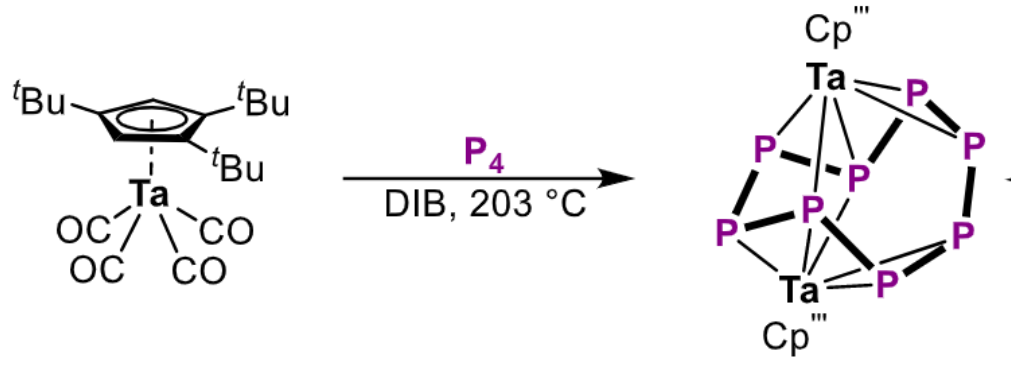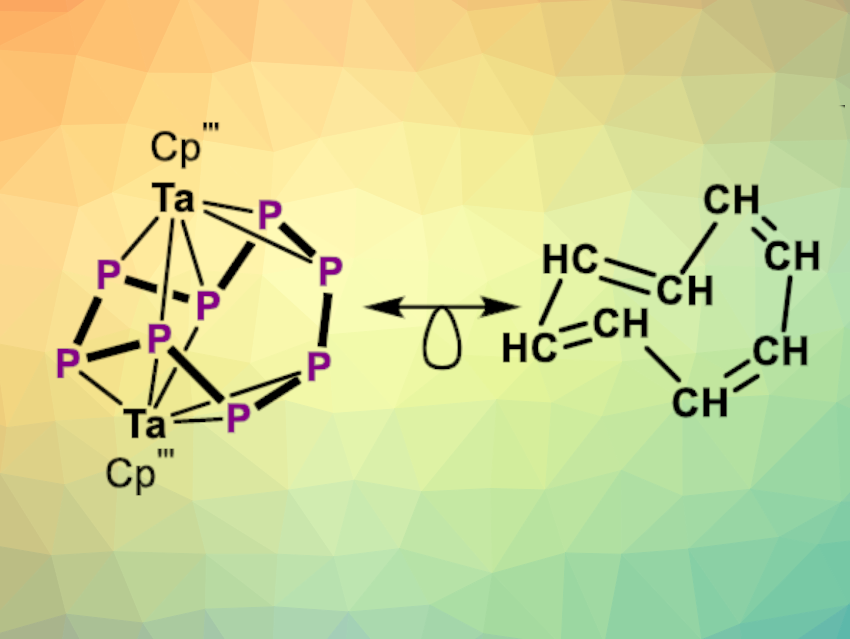Carbon-based cyclic molecules are important, e.g., as ligands in organometallic chemistry. Cyclooctatetraene (COT), for example, features an eight-membered ring with four C=C bonds and can form organometallic complexes and sandwich compounds. Cyclic oligo-phosphorus compounds are related compounds that are generally more challenging to synthesize. Oligo-phosphorus species can be stabilized, e.g., by organic substitution or by coordination to transition metals. So far, no monocyclic all-phosphorus species with more than six ring atoms had been found.
Manfred Scheer, University of Regensburg, Germany, and colleagues have synthesized the first complex containing a cyclooctatetraene-like cyclo-P8 ligand (pictured). The team started from Cp”’Ta(CO)4 (Cp”’ = 1,2,4-tBu3C5H2), which underwent co-thermolysis with white phosphorus (P4) in boiling 1,3-diisopropylbenzene (DIB). This reaction gave the cyclo-P8-containing complex [{Cp”’Ta}2(μ,η2:2:2:2:1:1-P8)] in a yield of 41 %.

The team studied the reactivity of the complex and found that the P8 unit can coordinate further metal-containing fragments such as W(CO)5 units. Oxidation of the complex leads to the formation of a P–P bond and dimerization to a dicationic species. A reduction of the complex cleaves a P–P bond, followed by dimerization to give a dianionic species. According to the researchers, the oxidation and reduction products contain the largest cationic polyphosphorus cage species and the longest unsubstituted polyphosphorus chain so far, respectively.
- Synthesis and Reactivity of a Cyclo‐Octatetraene‐Like Polyphosphorus Ligand Complex [Cyclo‐P8],
Christoph Riesinger, Fabian Dielmann, Robert Szlosek, Alexander Virovets, Manfred Scheer,
Angew. Chem. Int. Ed. 2023.
https://doi.org/10.1002/anie.202218828




